TCU Horses Bring Personalities to Competitions
Not just a horse, of course – equine-athletes are the stars of the stable at equestrian events.
TCU Horses Bring Personalities to Competitions
Not just a horse, of course – equine-athletes are the stars of the stable at equestrian events.
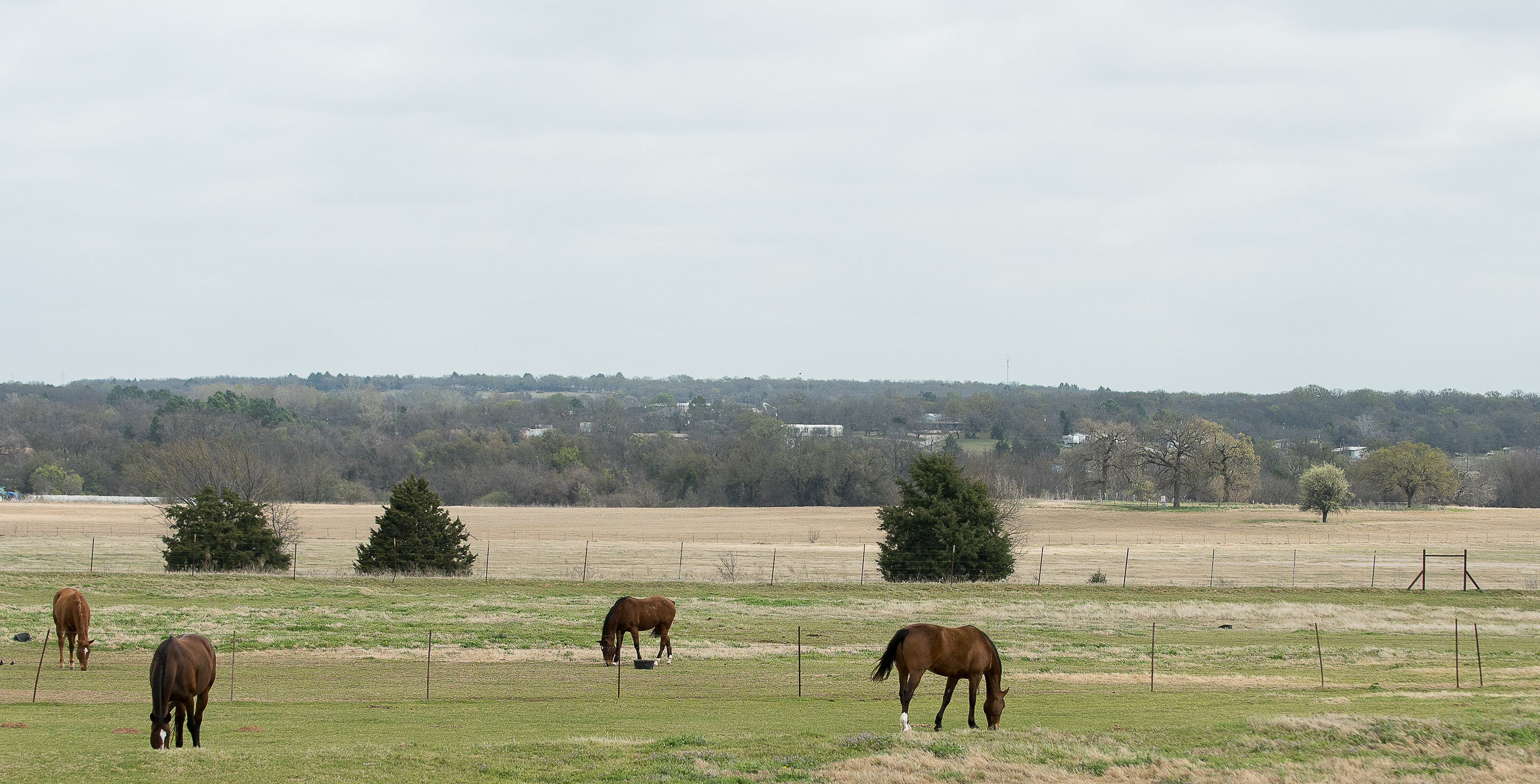
Equine-athletes graze at Turning Point Ranch, TCU’s practice facility in Springtown, Texas. Photo by Glen E. Ellman
It takes more than skilled horsewomen to win collegiate meets. TCU also has a stable full of accomplished and fierce four-legged competitors.
TCU’s team of equine-athletes holds steady at about 40. All the horses are donated, and all are trained show horses.
“People are very generous and ship horses to us from all over the country. We just got two from Florida,” said Haley Schoolfield, director of equestrian at TCU. “People know we will take good care of their animals.”
TCU’s hunt seat program has various warmblood breeds, while the Western side has American quarter horses, American paints and one Appaloosa.
Once donated horses pass a 30-day trial period, they stay on the team at least three years — some of them much longer. When it’s time for the horses to give up the rigors of collegiate competition, in which they are ridden by various riders several times a week, some return to their former owners while others may go to a new home with a less physically demanding job.
“We really work hard to make sure they have a good home when they leave TCU,” Schoolfield said.
In April, 14 TCU horses received invitations to the National Collegiate Equestrian Association’s National Championship: Java, Calisto, Luna, Mabel, Lotus, Lina, Ozzie, Tag, Flash, Shy, Jack, Dream, Cash and Scooby.
“It’s an honor. It means we have quality horses, and it’s recognized,” said Logan Fiorentino, hunt seat head coach. “We have some incredibly athletic horses.”
Like the student-athletes, each horse has its own personality. “The girls pick different ones to spoil for different reasons,” Schoolfield said. “We love them all.”
Tag — Mecklenburg
“Everyone loves Tag because he’s adorable, he looks the part, and he gets big scores,” Fiorentino said. “Tag is everybody’s favorite on the flat.”
That wasn’t always the case. When Tag arrived two years ago, he spooked at sunlight, was afraid of his own shadow and wouldn’t even walk through a puddle.
“He was very sensitive,” Fiorentino said. “That summer we went through bravery training. We walked over every wet spot after it rained and over every rubber mat on the ground. It was a lot about building his confidence but also understanding that his job is going forward and that he has to trust that we aren’t going to put him in a bad situation.”
Now Tag is one of TCU’s best horses in Equitation on the Flat, Fiorentino said. “For me that’s the fun part — when they are really able to show their abilities and become a star.”
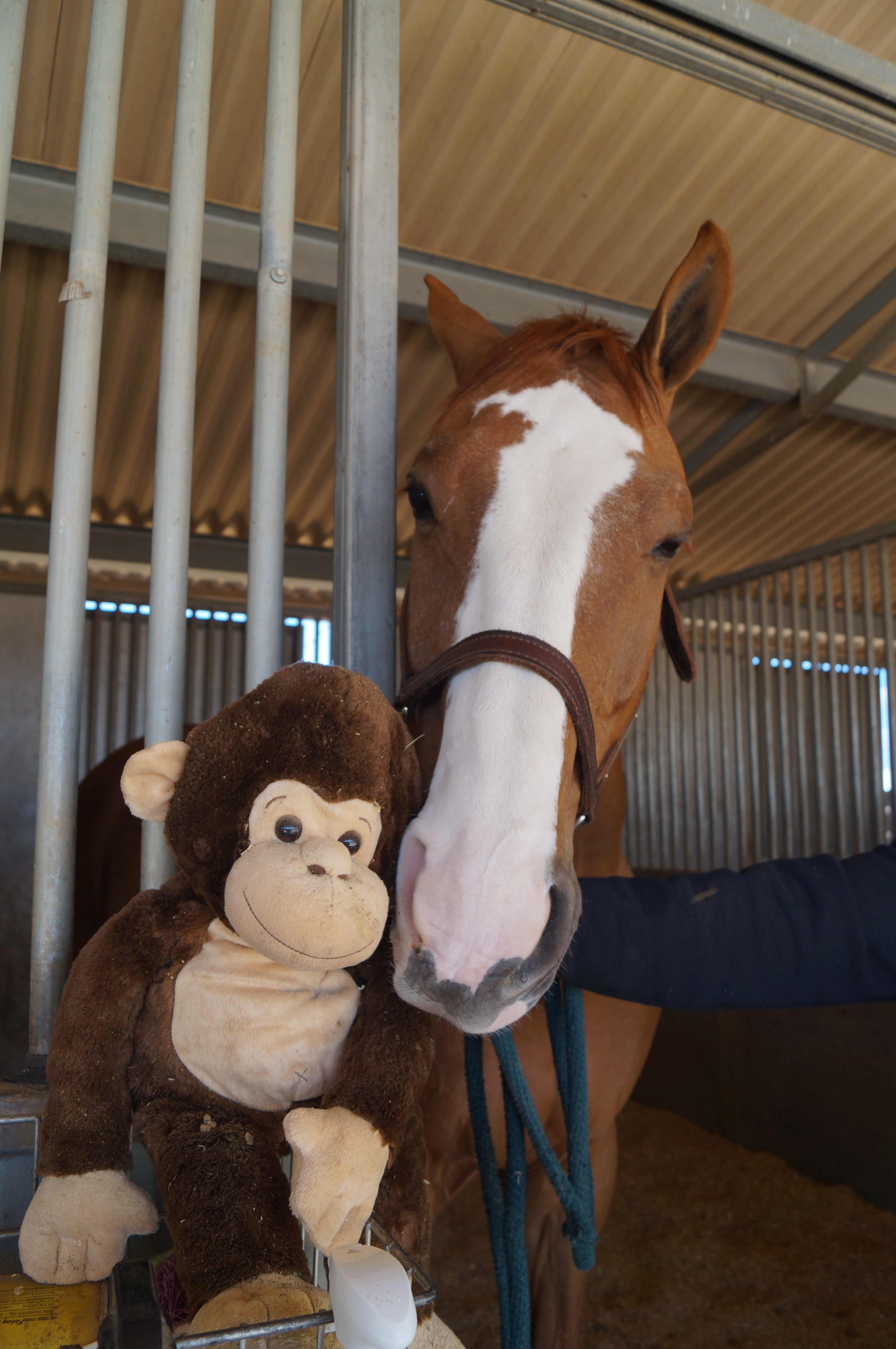
Flash with his stuffed monkey. Photo by Rachel Stowe Master
Flash — Hanoverian
Everyone needs a friend, and for Flash it’s a big stuffed-toy monkey that sits in his stall as well as makes all the road trips with him.
“The young woman who donated him was very adamant that he needs a companion,” Fiorentino said. “People are superstitious. If he came with a monkey, the monkey stays. We don’t want to upset the apple cart.”
Java — Polish warmblood
Java is a beauty at almost 17 hands tall. (In the horse world, one “hand” is 4 inches, meaning Java is almost 5-foot-8 at his withers, the tallest part of his back.)
He’s also a bit dramatic. He moans. He groans. When he nails his first practice run, he’s not eager to push through the paces again. “Java always enjoys a couple days off. I can appreciate that,” Fiorentino said.
When Java was donated in fall 2015, the coaches were warned. “His trainer told us, ‘He’s not a hardworking horse. He won’t work 9 to 5 Monday through Friday,’ ” Fiorentino said. “That’s not a problem here. That’s good that he doesn’t have to be worked every single day.”
Java also doesn’t help his rider compensate for her mistakes. But when she brings her A-game, he delivers big scores. “He’s definitely one that I love more on show days,” said Molly Peddicord ’17 of Malibu, California, who competed in both hunt seat events before graduating with a bachelor’s degree in communication studies in May. “He’s my favorite to look pretty on. When I’m cantering him around, I’m like, ‘Oh, I — or at least I think I — look good.’ ”
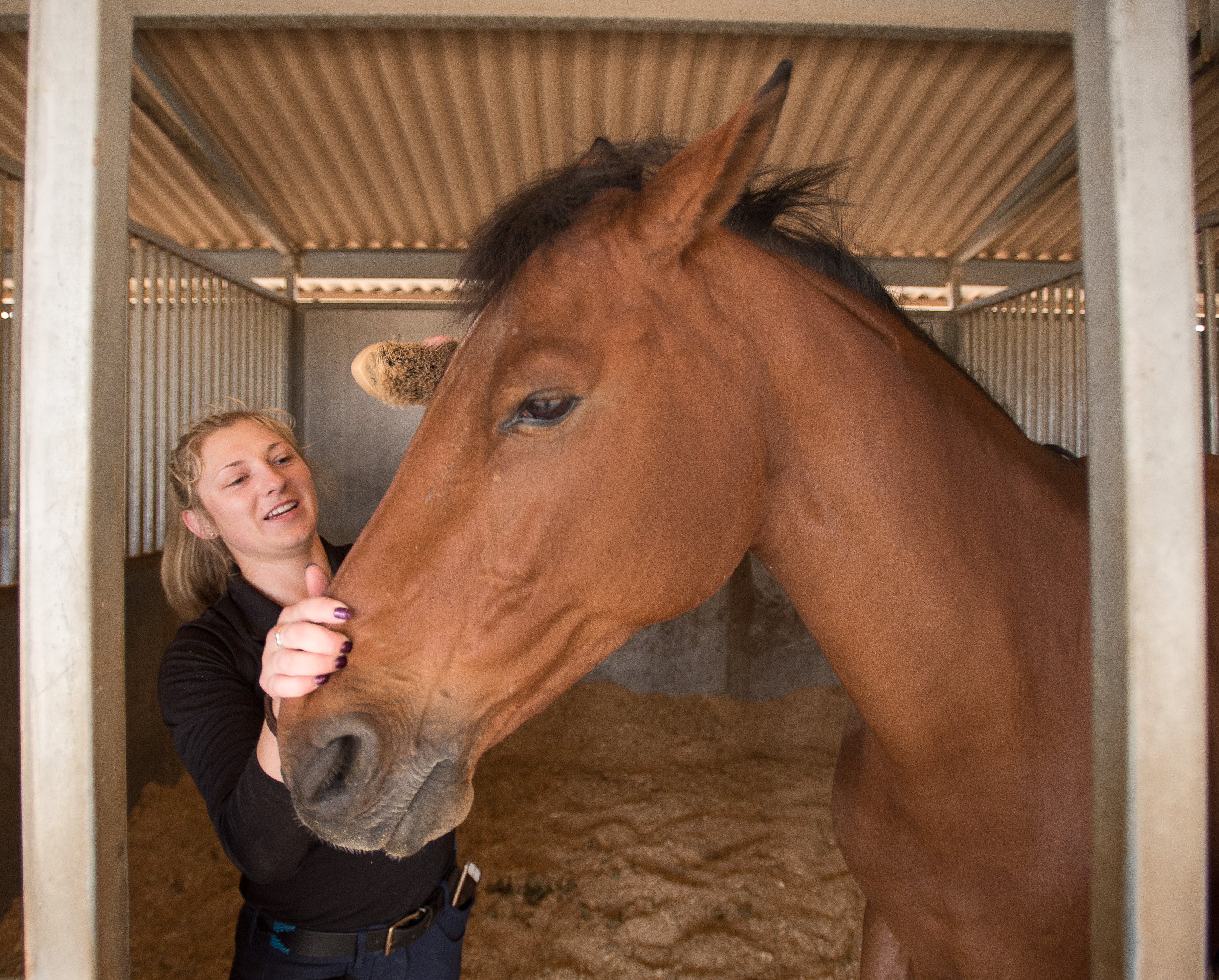
Hunt seat rider Jayme Omand grooms Mabel. Photo by Glen E. Ellman
Mabel — Holsteiner
Peddicord’s everyday favorite is Mabel, who joined the team in spring 2017. “She’s little and she was a jumper, and jumpers do bigger jumps at a faster pace. So I really like how sporty and athletic she is,” Peddicord said. “She went to both Big 12 and Nationals [championships].”
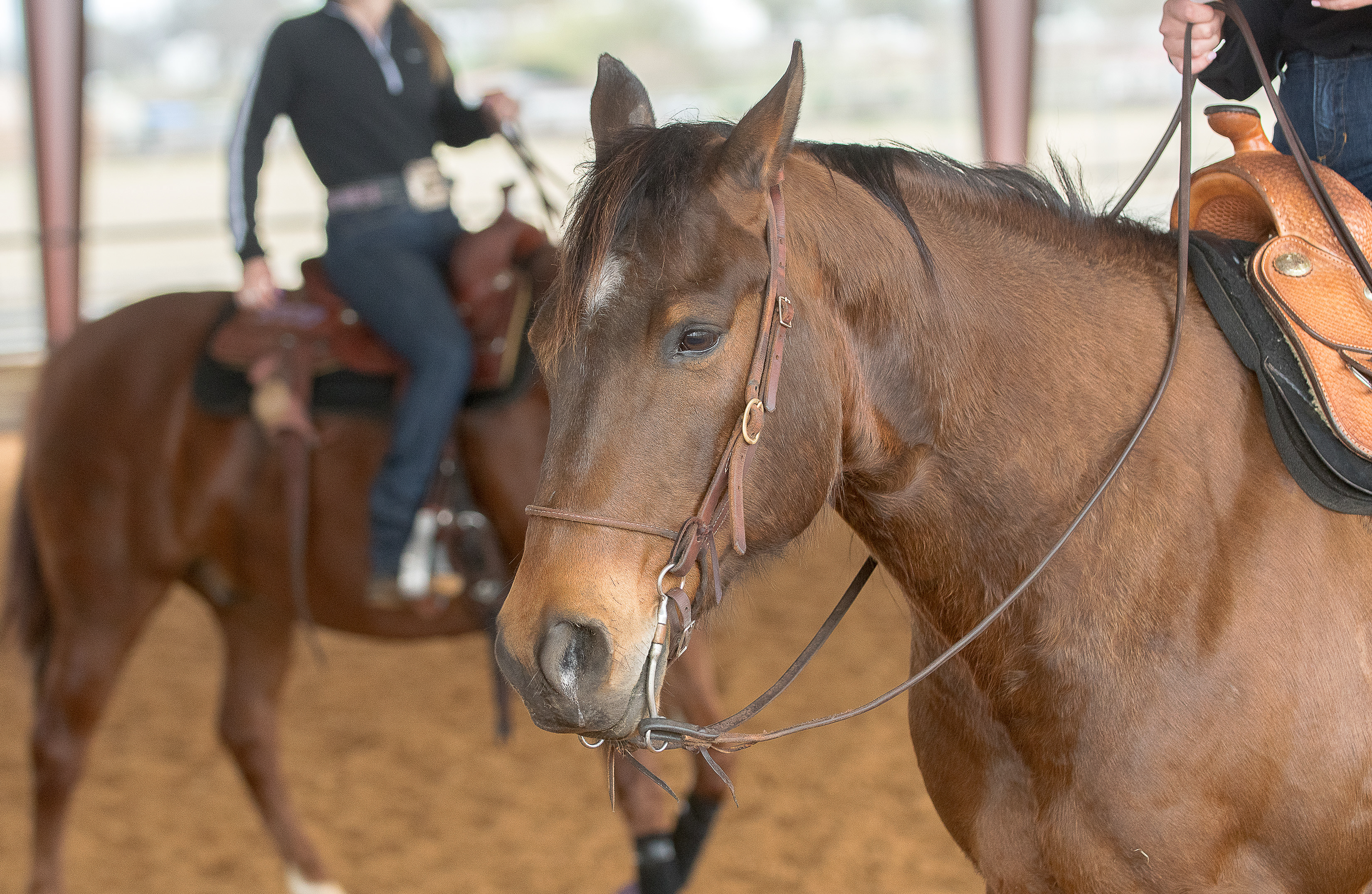
Ernie is saddled up at the Turning Point Ranch practice facility in Springtown, Texas. Photo by Glen E. Ellman
Ernie — American quarter horse
“I love riding him, but I love his personality. He’s kind of an Eeyore type of horse,” said Megan McMullen ’17 of Norris, Tennessee, who competed in Western horsemanship before earning a bachelor’s degree in business administration in May. “He lives out in the field, and it takes you probably 30 minutes to get him to the barn because he’s always dragging his feet. But if you are good to him, he will be good to you.”
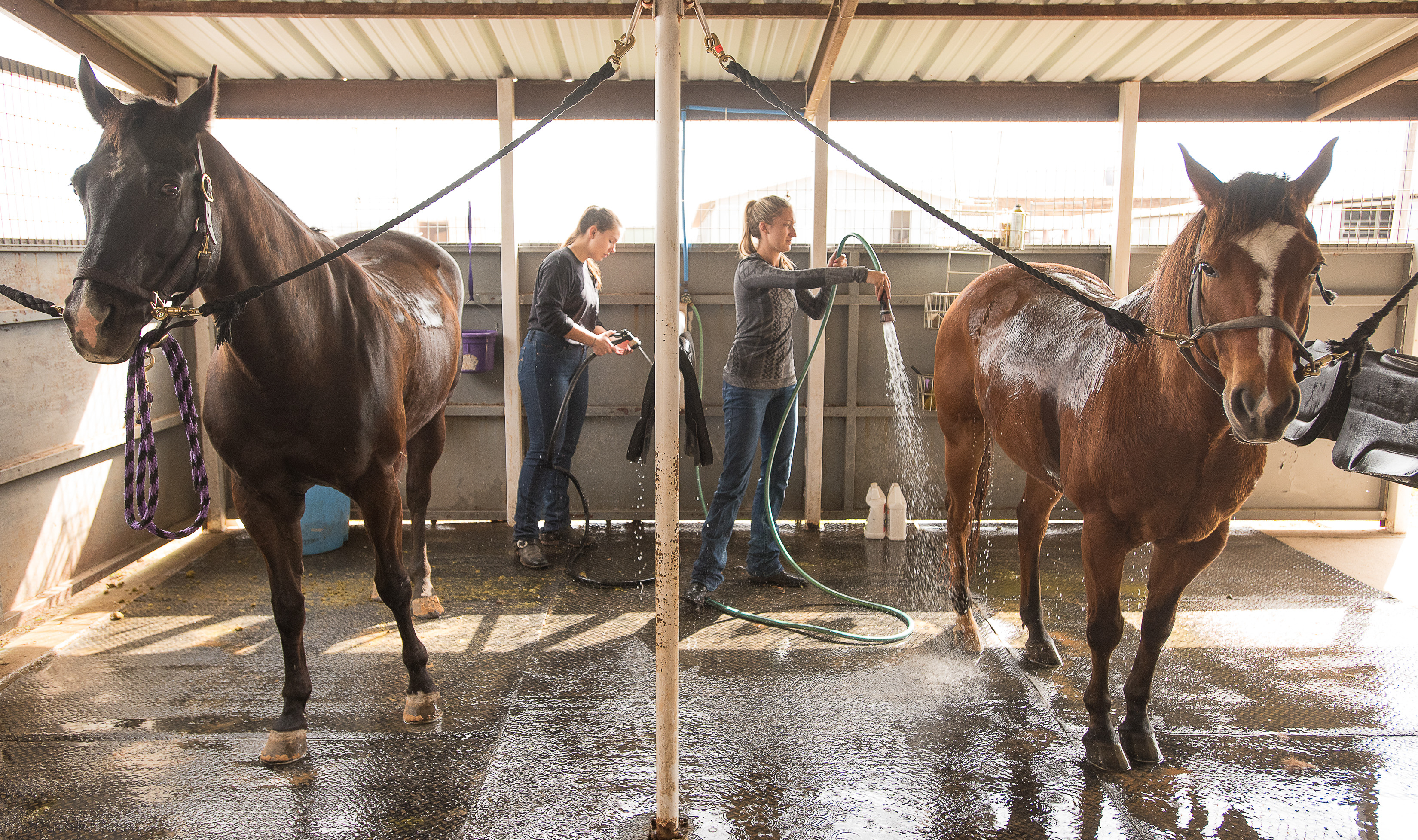
Left: Jamie Cook and Cupid; right: Marah Huston and Jack. Photo by Glen E. Ellman
Cupid — Appaloosa
The herd has tattletale horses. “The biggest one is Cupid. He knows what is supposed to be right, and if you aren’t doing it right, he will definitely do it wrong,” McMullen said.
Tattletale or not, Cupid is still the favorite of Laska Anderson, a sophomore history and English major in the John V. Roach Honors College, who took Cupid home for the summer to Leitchfield, Kentucky.
“He’s so talented, and he’s gorgeous, too,” said Anderson, who competes in Western horsemanship. “Cupid sometimes gets a little mad at the other horses, so I thought taking him home and having some consistent riding would help a little bit. He’s just such a fun horse to ride.”
Lina — warmblood
“I love to ride her — she’s so much fun. But I really love her personality,” said Jada Taylor, a junior strategic communication major from Washington, D.C., who competes in hunt seat events. “She is like a little princess, and I definitely treat her like one.”
The princess loves treats. “We took her to Nationals and I gave her all the apples that were meant for us,” Taylor said with a laugh.

Jayme Omand on Phia competing in Equitation over Fences. Photo by TCU Athletics/Michael Clements
Phia — Holsteiner
Like all good Horned Frogs, Phia thinks Oklahoma State University’s Pistol Pete is a little shady. The mare got an up-close view of the OSU mascot in 2016 when the school hosted the Big 12 Championship. Too close.
Oklahoma State “is very creative with [decorating] their jumps and do a good job with branding, and they’re proud of their logos,” Fiorentino said.
One of the jumps was decorated with three large Pistol Pete heads. “Phia was really offended by Pistol Pete,” she said. “She took every effort to avoid him when at all possible. Unfortunately, it didn’t work out very well for us. She’s a really brave horse and a really good horse, but something about Pistol Pete …” Phia probably won’t make a return trip to Oklahoma State.
Carmeline — Swedish warmblood
Kari Hancock ’17, who was a Chancellor’s Scholar in the John V. Roach Honors College, had the same favorite horse all four years on the team: Carmeline.
“She’s a very sensitive horse. She likes some riders. She doesn’t like others,” said Hancock, who competed in both hunt seat events. “She’s so talented that when you are able to get her to work with you and to really listen, it is one of the most rewarding rides because she is such a tough horse. She usually wins us a lot of points because the other teams don’t know how to get her to work best.”
The love between this horse and rider is mutual, and the two bring out the best in each other: Hancock and Carmeline set a TCU, Big 12 and National Collegiate Equestrian Association record score of 98 in Equitation on the Flat in 2015.
“That was one of the most validating moments in my career, to have everything come together so nicely and flow through a pattern, especially on my favorite horse. And to get a score like that was unbelievable,” Hancock said. “It’s something I never thought I would achieve.

Your comments are welcome
Comments
Related reading:
Features, Sports: Riff Ram
Equestrian Team Is Ready for Another Run
After back-to-back final four finishes, TCU saddles up for a new year.
Features
How Equestrian Competition Works
Horseplay: Game Day Logistics. TCU and other schools face off for points in four equestrian events.
Features, Sports: Riff Ram
TCU Equestrian Competitors Ride High in Academic Accolades
Student-athletes keep a tight rein on their academic studies.